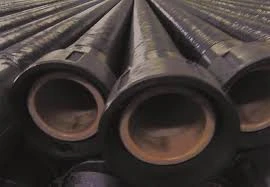
-
 Afrikaans
Afrikaans -
 Albanian
Albanian -
 Amharic
Amharic -
 Arabic
Arabic -
 Armenian
Armenian -
 Azerbaijani
Azerbaijani -
 Basque
Basque -
 Belarusian
Belarusian -
 Bengali
Bengali -
 Bosnian
Bosnian -
 Bulgarian
Bulgarian -
 Catalan
Catalan -
 Cebuano
Cebuano -
 China
China -
 China (Taiwan)
China (Taiwan) -
 Corsican
Corsican -
 Croatian
Croatian -
 Czech
Czech -
 Danish
Danish -
 Dutch
Dutch -
 English
English -
 Esperanto
Esperanto -
 Estonian
Estonian -
 Finnish
Finnish -
 French
French -
 Frisian
Frisian -
 Galician
Galician -
 Georgian
Georgian -
 German
German -
 Greek
Greek -
 Gujarati
Gujarati -
 Haitian Creole
Haitian Creole -
 hausa
hausa -
 hawaiian
hawaiian -
 Hebrew
Hebrew -
 Hindi
Hindi -
 Miao
Miao -
 Hungarian
Hungarian -
 Icelandic
Icelandic -
 igbo
igbo -
 Indonesian
Indonesian -
 irish
irish -
 Italian
Italian -
 Japanese
Japanese -
 Javanese
Javanese -
 Kannada
Kannada -
 kazakh
kazakh -
 Khmer
Khmer -
 Rwandese
Rwandese -
 Korean
Korean -
 Kurdish
Kurdish -
 Kyrgyz
Kyrgyz -
 Lao
Lao -
 Latin
Latin -
 Latvian
Latvian -
 Lithuanian
Lithuanian -
 Luxembourgish
Luxembourgish -
 Macedonian
Macedonian -
 Malgashi
Malgashi -
 Malay
Malay -
 Malayalam
Malayalam -
 Maltese
Maltese -
 Maori
Maori -
 Marathi
Marathi -
 Mongolian
Mongolian -
 Myanmar
Myanmar -
 Nepali
Nepali -
 Norwegian
Norwegian -
 Norwegian
Norwegian -
 Occitan
Occitan -
 Pashto
Pashto -
 Persian
Persian -
 Polish
Polish -
 Portuguese
Portuguese -
 Punjabi
Punjabi -
 Romanian
Romanian -
 Russian
Russian -
 Samoan
Samoan -
 Scottish Gaelic
Scottish Gaelic -
 Serbian
Serbian -
 Sesotho
Sesotho -
 Shona
Shona -
 Sindhi
Sindhi -
 Sinhala
Sinhala -
 Slovak
Slovak -
 Slovenian
Slovenian -
 Somali
Somali -
 Spanish
Spanish -
 Sundanese
Sundanese -
 Swahili
Swahili -
 Swedish
Swedish -
 Tagalog
Tagalog -
 Tajik
Tajik -
 Tamil
Tamil -
 Tatar
Tatar -
 Telugu
Telugu -
 Thai
Thai -
 Turkish
Turkish -
 Turkmen
Turkmen -
 Ukrainian
Ukrainian -
 Urdu
Urdu -
 Uighur
Uighur -
 Uzbek
Uzbek -
 Vietnamese
Vietnamese -
 Welsh
Welsh -
 Bantu
Bantu -
 Yiddish
Yiddish -
 Yoruba
Yoruba -
 Zulu
Zulu
grp handrail
The Importance of GRP Handrails in Modern Construction
In the realm of modern construction and architecture, safety and durability are of paramount importance. One innovative solution that has gained popularity in recent years is the use of Glass Reinforced Plastic (GRP) for handrails. These handrails not only meet safety standards but also offer a range of advantages that make them an ideal choice for various applications.
What is GRP?
Glass Reinforced Plastic, commonly known as fiberglass, is a composite material made of a plastic matrix reinforced by fine glass fibers. This combination results in a lightweight yet incredibly strong material. GRP is inherently resistant to corrosion, making it suitable for both indoor and outdoor environments. Its robustness, coupled with its aesthetic appeal, contributes to its rising acceptance in major construction projects.
Safety First GRP Handrails and Compliance
One of the primary functions of handrails is to provide safety in buildings, walkways, staircases, and public spaces. GRP handrails play a crucial role in this regard. Adhering to strict safety regulations, these handrails are designed to withstand significant loads and impacts, ensuring maximum protection for users. The material's non-slip properties are particularly beneficial in areas prone to moisture, reducing the risk of slips and falls.
Durability and Low Maintenance
grp handrail

Another significant advantage of GRP handrails is their durability. Unlike traditional materials such as wood or metal, GRP does not corrode, rust, or succumb to the vulnerabilities associated with both environmental factors and time. This results in a long lifespan for GRP handrails, which translates to lower maintenance costs over time. Property owners and managers appreciate not having to frequently replace or repair their handrails, making GRP a cost-effective choice in the long run.
Aesthetic Versatility
Beyond their practical benefits, GRP handrails also offer aesthetic versatility, allowing architects and designers to create appealing environments. Available in various colors, textures, and finishes, GRP can complement the overall design of a space. Whether it’s for a contemporary office building, a residential property, or an industrial facility, GRP handrails can be customized to fit seamlessly into the architectural vision while ensuring safety.
Sustainability and Eco-Friendliness
With growing concerns about environmental sustainability, GRP emerges as a more eco-friendly option compared to traditional materials. Its manufacturing process typically produces fewer pollutants, and as it is durable, it contributes to a reduction in waste from frequent replacements. Furthermore, many companies are now producing GRP handrails from recycled materials, reinforcing their commitment to environmentally responsible practices.
Conclusion
In conclusion, GRP handrails are an exemplary choice for modern construction, combining safety, durability, low maintenance, aesthetic appeal, and environmental sustainability. As more architects and builders recognize the benefits of using GRP materials in their projects, we can expect to see an increasing trend in the use of GRP handrails across various sectors. This innovative material not only enhances safety but also contributes to the overall efficiency and sustainability of construction practices. As we move forward, investing in GRP handrails will undoubtedly be a step in the right direction for safe, aesthetically pleasing, and environmentally friendly environments.
Latest news
-
Exploring the Benefits of Top Hammer Drifter Rods for Enhanced Drilling PerformanceNewsJun.10,2025
-
High-Precision Fiberglass Winding Machine for GRP/FRP Pipe Production – Reliable & Efficient SolutionsNewsJun.10,2025
-
FRP Pipes & Fittings for Shipbuilding - Corrosion-Resistant & LightweightNewsJun.09,2025
-
Premium FRP Flooring Solutions Durable & Slip-ResistantNewsJun.09,2025
-
Premium Fiberglass Rectangular Tanks Durable & Lightweight SolutionNewsJun.09,2025
-
Tapered Drill String Design Guide Durable Performance & UsesNewsJun.09,2025









